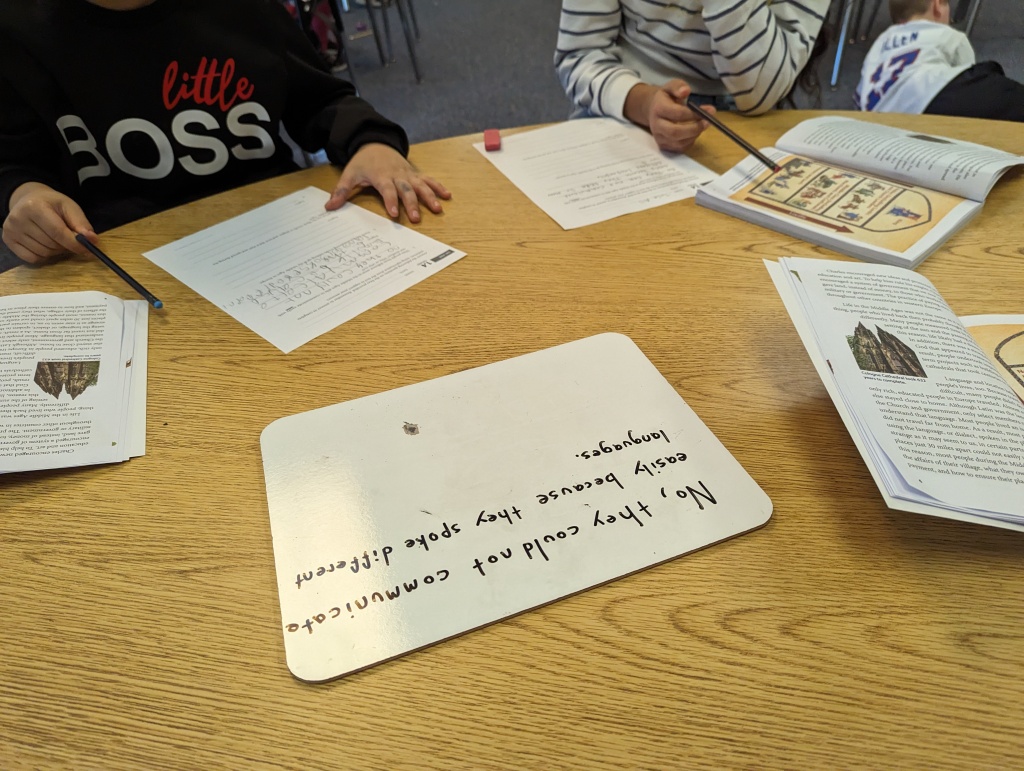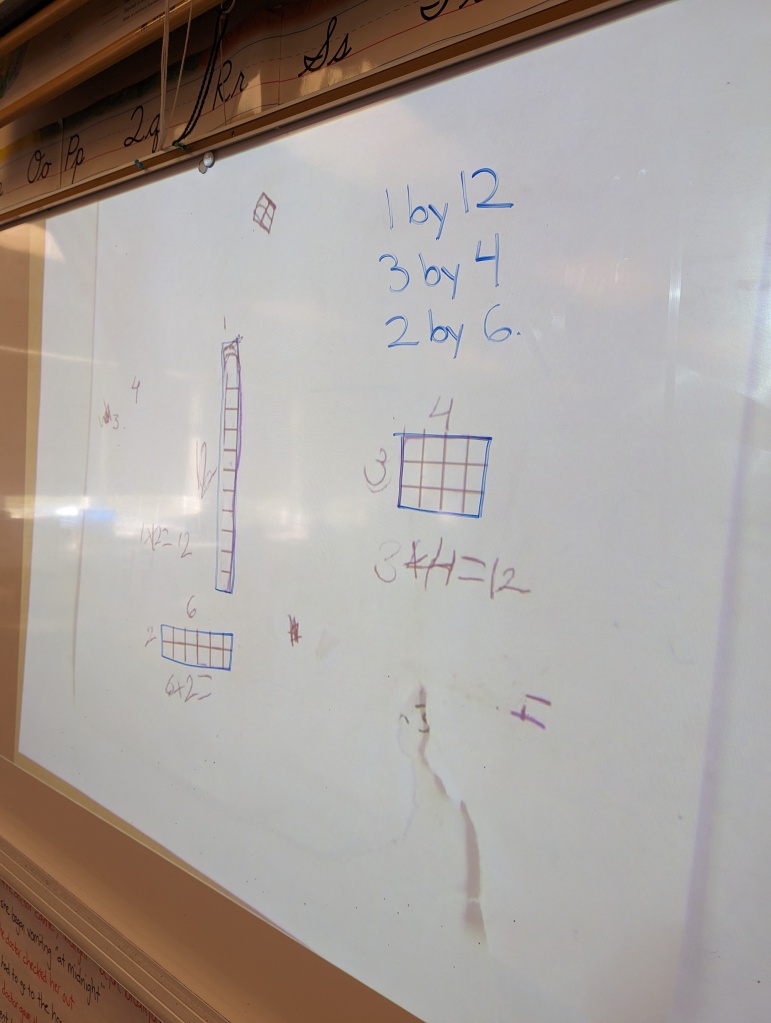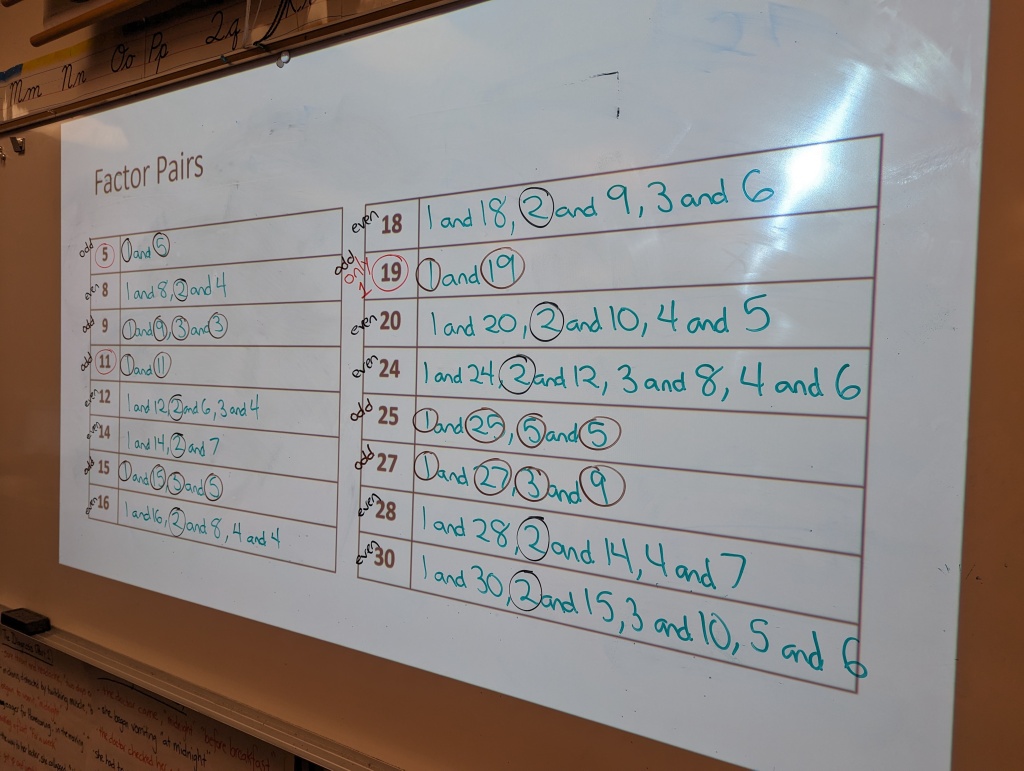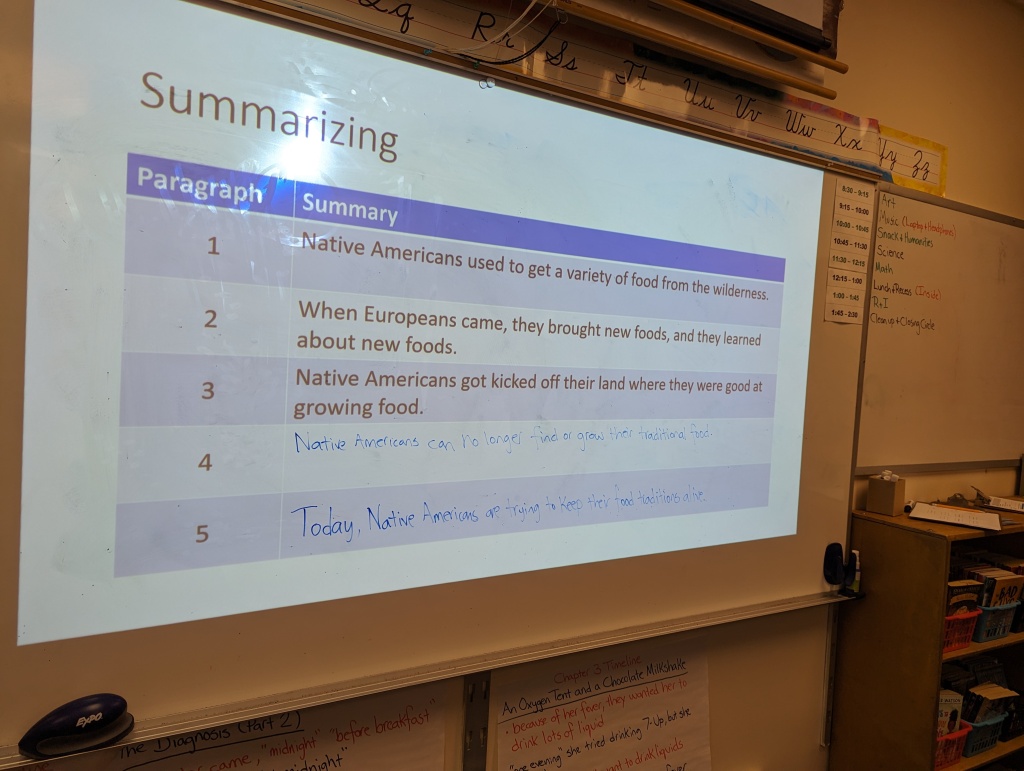Short week this week! We had school Monday and Tuesday, and now we’re off for the rest of the week for Thanksgiving recess. What I’m really excited about is that I got all my planning and prep done today, so I didn’t have to bring my computer or any work home with me. Sure, there’s grading I need to do when I get back, but for the next 5 days I am taking a mental break from work. Time for some rest and relaxation!
Day 50
Number Sense Routine
I was excited to start the day with our third Estimation Clipboard activity. The students were excited, too!
The first picture is always the hardest. Our estimates had quite a wide range, 39-82. Students shared why they thought their estimate was reasonable, but no one was convinced to revise their initial estimate.
For the second picture, the range was still pretty broad, 43-74.
Me: “If your estimate is 43, how many pebbles are you saying were removed?”
S1: “…46.”
Me: “Let’s take a look. Do you think 46 pebbles were removed?”
S1: “No, maybe only 20 were removed. Can I revise my estimate?”
Me: (marks up the drawing to show that maybe 20 pebbles have been removed) “Of course! What do you think it is now?”
S1: “69.”
For the third drawing, our estimates tightened up even more. Students were estimating in the mid-40s to mid-50s.
Me: “How did you get your estimate this time?”
S2: “It doesn’t look like that many have been removed, like maybe 6 or 8. I just took away 8 from 61.”
And for the final picture, our range was similar with mid-70s to mid-80s.
S3: “I used the first picture to help me. I think maybe 13 were taken off the top.”
S4: “I think maybe 3 were taken off the top.”
S3: “I think it’s more than 3 because I can count 3 outside of the jar in the picture at the top and there are still more around it.”
Amplify CKLA
Instead of moving on to the next Amplify CKLA lesson this morning, we did the assigned homework from Lesson 1 in class. Students reread chapter 1 in their reader and answered 3 text-based questions.
While everyone else worked in pairs, I reread the chapter with two of my English as a New Language students, and the three of us worked together to answer the questions.
I could not fathom my students being successful with this assignment as homework, but they handled it well in class today. I think I’m going to make a habit of doing the assigned homework readings in class. I’ll probably be doing a lot of partner reading as well. I know it will slow us down, but it will ensure students have repeated opportunities to practice reading and engaging with these complex texts.
Math
To refresh our memories after the weekend, we started today’s math lesson with a review of the meaning of the terms area and multiple. To reconnect with multiple, I asked students for numbers that are multiples of 2 and numbers that are not multiples of 2.
Next, we did a number talk with a string of multiplication problems all involving 7 as a factor. I feel like many of my students see multiplication facts as discrete objects. It was nice to get some ideas shared today that showed how other facts can be used to find the product of a different fact. The more comfortable they are with partial products with single-digit facts, the easier it will be to introduce and use partial products with larger numbers later.
For our core math lesson today, students worked in pairs to create all the rectangles they could with a given area. Each pair of students got two numbers to explore.
Afterward, they went on a gallery walk to see the posters their classmates made with all the different numbers that were assigned.
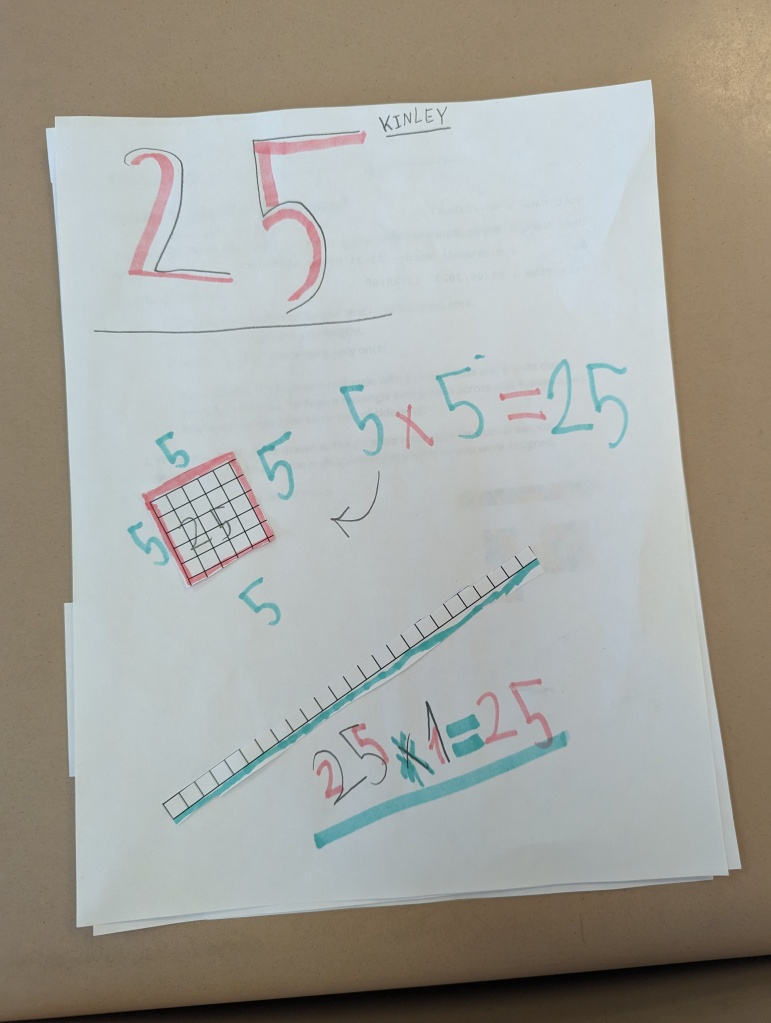
When we came back together, one student shared, “I noticed everyone had a rectangle with 1.” This led us to dig deeper into what she meant. Ultimately we came up with, “Everyone has a rectangle that’s 1 row of their number.”
We didn’t get to finish the lesson, so tomorrow I’ll introduce the term factor pair and we’ll connect that new term to all of the rectangles they created today.
Day 51
Humanities
This morning we made it through the halfway point in Love That Dog. Over the past few weeks, students have gathered 15 entries as they’ve read that answer the questions, “What happened?”, “How does Jack feel about it?”, and, “What text evidence helps you know how he’s feeling?”
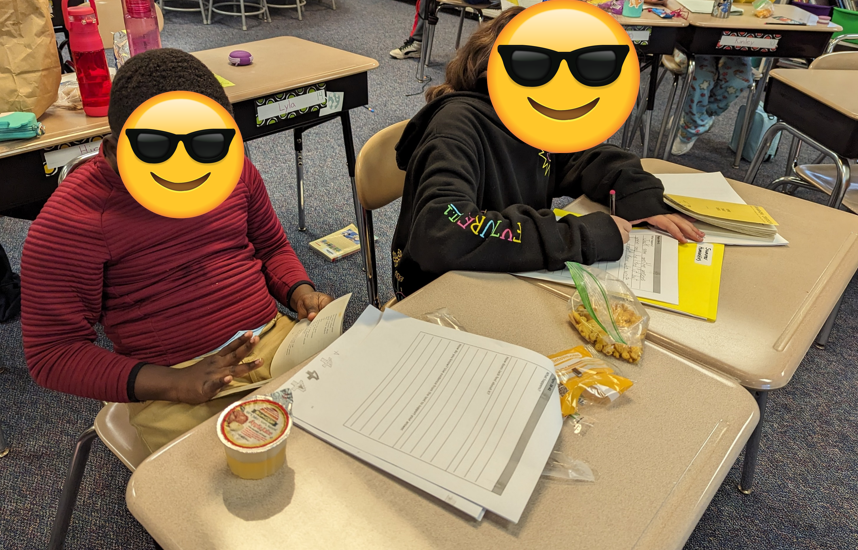
When we come back from Thanksgiving break, we’ll stop and analyze all of these entries to help us answer the question, “How has Jack changed from the start of the book until now?”
Amplify Science
Today we finally wrapped up the third chapter in our Energy Conversions unit in Amplify Science.
In this final lesson, we gathered evidence from a town climate report and a reference book to help us decide how well the two possible solutions, solar and wind power, meet the town’s criteria:
- It has to add more energy to the electrical system
- It can’t be too expensive
- It has to be safe for the environment
Neither solution meets the criteria perfectly, so students had to look at the trade offs and decide which of the two is a better option and use the evidence we collected to explain their reasoning.
Math
To warm up today, students had to work in pairs to determine which of the numbers on the board are multiples of 5 and which are not. Then they had to use multiplication to justify their answers.
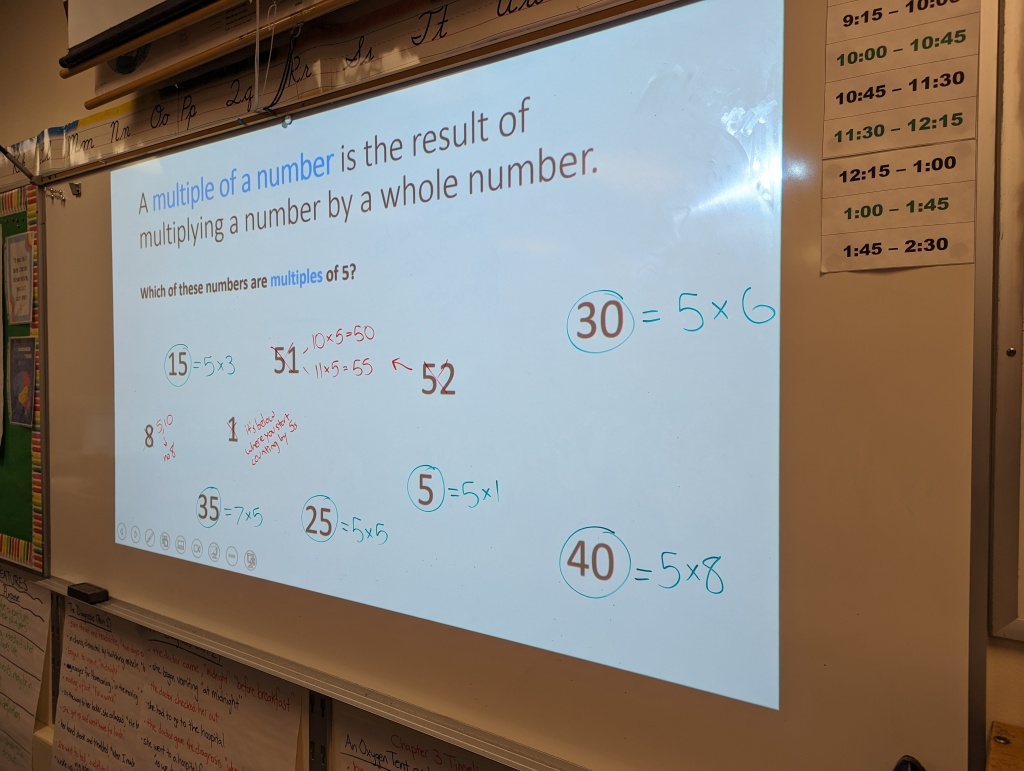
Some of the students keep defaulting to skip counting. While skip counting is related to multiplication, I’m working hard to nudge them away from a strategy that can be used to calculate products and toward the operation itself. It feels like an uphill battle.
To reconnect with the activity we did yesterday, I put up two rectangles with an area of 21. Students were able to identify the length, width, and area of each rectangle. When I asked, “Are there any more rectangles that can be made with an area of 21?” Students didn’t think there were any, but they had no idea how they could prove it. I gave them think time, asked them to chat in pairs, and they still had nothing. I finally said, “We’re using multiplication to show that we can multiply the length and width to get the area. Could we try multiplying other numbers to see if we can get 21?”
Suddenly they were re-engaged with the task. “We can try 8s. I know 8 times 3 is 24.”
Me: “Okay, that’s too high. What’s the next 8 fact below that?”
S1: “8 x 2 is 16. That’s too low.”
We repeated this for a while, trying out lots of different possible factors.
When we finished I shared, “Wow! Look at all these factors you tried. Earlier, you didn’t have any strategies for checking to see if there are any more rectangles that can be made with an area of 21. What strategy did we just use?”
S2: “We tried multiplying by other numbers to see if it would work.”
After introducing the term factor pair, we collected together all the factor pairs students found with the areas they explored yesterday.
Once they were all collected, I said, “I remember when we did our gallery walk, one of you made a really interesting observation. Do you remember what it was?”
S3: “That every poster had a rectangle with 1.”
Me: “Let’s see if that’s true now that we’ve got all the factor pairs up here.”
We went through each factor pair and realized there is a “1 and __” factor pair for every single number.
Then I asked, “What else do you notice?”
S4: “Some of the numbers only have one factor pair.”
Me: (circles all the numbers that have only one factor pair) “That’s so interesting. These three only have one factor pair, but all the others have more. Why do you think these three might only have one?”
S5: “They’re all odd.”
Me: “Interesting. So maybe even numbers have something that makes them have more factor pairs? Take a look and see if you notice anything all the even numbers have in common.”
S6: “They all have 2!”
Me: (circles the 2 in all the even numbers) “Interesting. Do any of the odd numbers have 2 in them?”
S7: “…No. None of them do.”
Me: “Do the odd numbers have anything in common like the even numbers do? Maybe there’s a number they all have?”
S8: “No, but all the factors are odd.”
Me: “Really? Let’s take a look at that.”
We looked at every factor of an odd number and realized every single factor pair is composed of odd number.
Me: “How interesting! What does this tell you about odd numbers?”
S9: “They only have odd factors.”
Response to Intervention
My RtI class was able to finish reading and summarizing an article Native Americans keeping their food traditions alive today.
Next week I’d like to start pulling small groups to read and discuss longer texts.
Closing Circle
We closed out our day with an activity called “Triple A: Appreciations, Affirmations, and Accolades.” After introducing those three terms to the students, they each had a chance to write a short note to give an appreciation, affirmation, or accolade to another member of our class.

When they were done writing, we shared out what they wrote in a community circle. Some of the students were shy to read the notes they wrote, so we mixed them up so everyone read a note someone else had written.

I took a risk and let students choose who they wanted to write to. Surprising to no one, some students did not receive any notes, which led to some hurt feelings. I feel bad about that. At the same time I didn’t want to assign everyone a person to thank which could make the appreciations feel forced. I liked that my students authentically shared kind words today. I’ll just have to make sure I continue to include activities like this to keep giving students repeated opportunities to give and receive appreciation.





